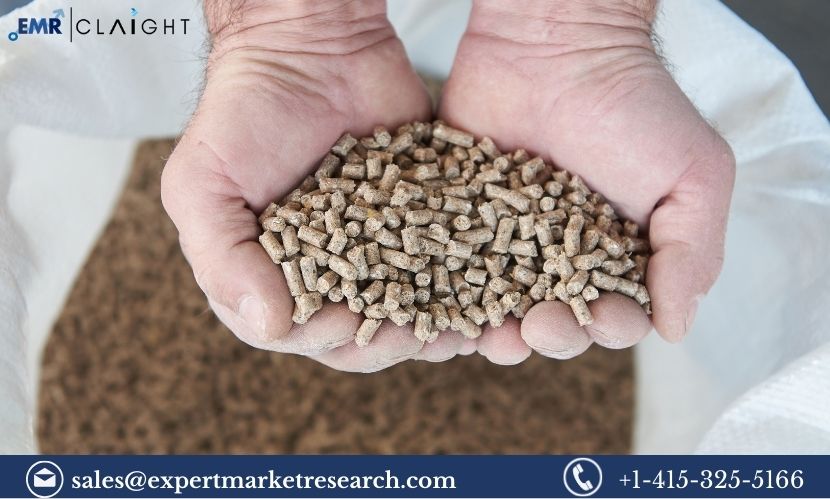Japan Animal Feed Market Outlook
The Japan animal feed market, valued at approximately 21.11 Kilo Tons in 2024, is projected to grow at a modest compound annual growth rate (CAGR) of 1.50% during the forecast period from 2025 to 2034. By 2034, the market is expected to reach a volume of around 24.50 Kilo Tons. The market growth is driven by several factors, including the increasing demand for animal protein, the growth of the livestock industry, and the need for high-quality, nutritious feed to improve livestock productivity.
Japan’s agricultural industry is highly advanced, with a strong focus on sustainable practices and high-quality food production. The increasing demand for meat, dairy, and aquatic products in the country, as well as the growing awareness of animal nutrition and welfare, is supporting the demand for various types of animal feed. Additionally, the Japanese government’s efforts to improve domestic agricultural output through better livestock management practices and feed efficiency are likely to continue fueling the market growth.
Get a Free Sample Report with Table of Contents@ https://www.expertmarketresearch.com/reports/japan-animal-feed-market/requestsample
Japan Animal Feed Market Trends
The Japan animal feed market is witnessing several significant trends that are shaping its future growth. One of the most notable trends is the increasing demand for compound feed, which is specifically formulated to provide a balanced mix of nutrients for animals. This trend reflects the growing focus on improving animal health and productivity, as farmers and producers look for more efficient ways to raise livestock while ensuring sustainability and profitability. Compound feed typically contains a blend of raw materials, such as grains, protein meals, vitamins, and minerals, and is designed to meet the specific nutritional needs of different animal species.
Another trend in the market is the increasing shift towards high-quality and nutritionally balanced feed, driven by the growing demand for meat, poultry, and aquatic products. As consumers in Japan become more health-conscious and demanding of higher-quality food products, there is an increasing focus on providing animals with superior nutrition to ensure better growth rates, meat quality, and disease resistance. This trend has led to the development of advanced feed formulations and the use of functional ingredients such as prebiotics, probiotics, and amino acids in animal feed to promote health and reduce the use of antibiotics.
The growing demand for alternative feed ingredients, such as plant-based proteins, is also a significant trend. This shift is partly driven by concerns over the sustainability of traditional animal feed ingredients, such as soy and corn. In addition, plant-based ingredients offer the potential for cost savings and reduced environmental impact, making them an attractive option for animal feed manufacturers. The rising focus on sustainable farming practices in Japan has prompted the exploration of alternative raw materials that are both environmentally friendly and nutritionally viable for livestock.
Japan Animal Feed Market Growth
The Japan animal feed market is expected to experience steady growth over the forecast period, driven by the steady increase in livestock production and the rising demand for animal-based food products. The market is likely to see growth in both domestic production and imports of animal feed, with key sectors such as poultry, pork, and aquatic animals driving demand for higher volumes of feed.
The increase in consumer demand for animal protein, including pork, poultry, and seafood, is a major factor contributing to the growth of the animal feed market. As the demand for meat and seafood continues to rise, especially in urban centres, the need for high-quality, efficient feed products to raise healthy and productive animals will also increase. This will be particularly relevant for the aquatic animal sector, where aquaculture is expanding in Japan to meet growing domestic and international demand for seafood.
Furthermore, the government’s support for modernising the agriculture and livestock sectors is expected to contribute to market growth. Initiatives aimed at improving feed efficiency, animal welfare, and sustainability are likely to benefit feed manufacturers and farmers, driving innovation and production in the animal feed market. Additionally, advancements in feed manufacturing technologies, such as precision feeding and automated feeding systems, are expected to improve feed efficiency and contribute to market expansion.
Japan Animal Feed Market Segmentation
The Japan animal feed market can be segmented by type, livestock, raw material, and region.
- Breakup by Type:
- Fodder and Forage: Fodder and forage remain key components of animal feed, particularly for livestock such as cattle. This segment includes crops like alfalfa, clover, and grasses, which are fed to animals to provide roughage and fibre. The demand for fodder and forage is expected to remain steady, particularly in rural areas where traditional farming practices are still prevalent.
- Compound Feed: The compound feed segment is anticipated to see the highest growth over the forecast period, driven by the increasing demand for nutritionally balanced, high-quality feed. Compound feed is used to ensure that livestock receive the right proportions of protein, vitamins, and minerals to promote health and productivity. This segment includes feed formulated for poultry, cattle, pigs, and aquatic animals.
- Breakup by Livestock:
- Pork: Pork remains one of the largest livestock segments in Japan. The demand for pork is rising due to increasing consumer consumption of pork-based products, including sausages, bacon, and pork cuts. This is driving the demand for high-quality pig feed that supports animal growth, health, and productivity.
- Aquatic Animal: The aquatic animal segment is seeing a rise in demand, driven by the growing popularity of seafood in Japan. Aquaculture, including fish farming and shrimp farming, is expanding as consumers increasingly seek sustainable and locally sourced seafood. The demand for aquatic animal feed is increasing in line with the growth of the aquaculture industry.
- Cattle: The cattle feed segment continues to grow steadily, supported by the demand for beef and dairy products. Compound feed designed for cattle is formulated to provide balanced nutrition, supporting both meat production and milk yields.
- Poultry: Poultry is another key livestock category in Japan, with increasing consumer demand for chicken and eggs. The poultry sector continues to grow due to the popularity of poultry products and the need for efficient feed solutions to support poultry farming.
- Others: Other livestock categories, such as sheep and goats, also contribute to the market but on a smaller scale compared to pork, poultry, and cattle.
- Breakup by Raw Material:
- Soy: Soy is one of the most commonly used ingredients in animal feed, especially for poultry and pork. It is rich in protein, making it a critical component of compound feed formulations. The growing demand for high-protein feed for livestock continues to drive the use of soy as a key raw material in Japan’s animal feed market.
- Corn: Corn is another major raw material used in animal feed, particularly for cattle and poultry. It is a high-energy ingredient that supports growth and productivity. The increasing demand for corn-based feed is expected to continue as livestock farming becomes more intensive.
- Others: Other raw materials used in animal feed include wheat, barley, and various plant-based proteins. These alternative ingredients are being explored to reduce dependency on soy and corn and to provide more sustainable and cost-effective options for animal feed production.
Market Key Players
Key players in the Japan animal feed market include:
- Alltech Inc.
- FEED ONE CO., LTD.
- Nutreco N.V.
- Archer-Daniels-Midland Company
- Marubeni Nisshin Feed Co., Ltd.
- Showa Sangyo Co., Ltd.
- Mitsubishi Corporation (Nosan Corporation)
- Others: Several regional and local companies are also contributing to the growth of the market, providing a wide range of animal feed products to meet the diverse needs of livestock farmers. These players focus on product innovation, sustainability, and improving feed efficiency to enhance the health and productivity of animals.









